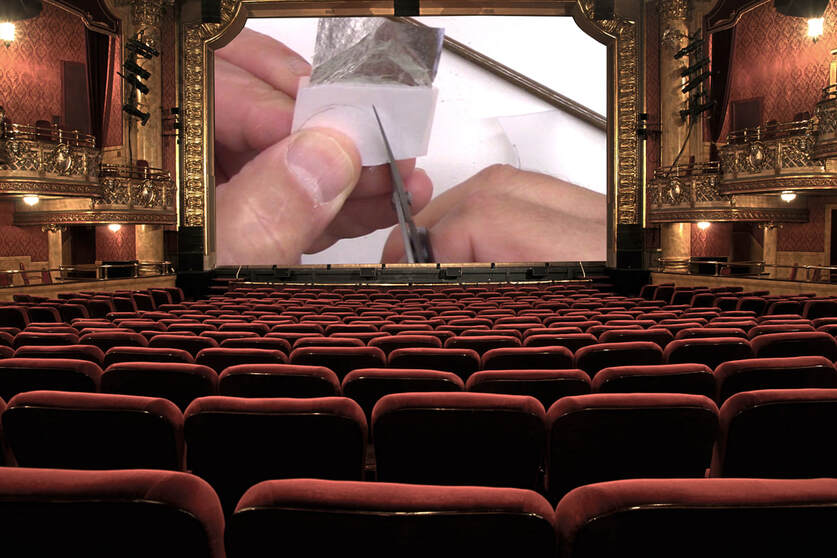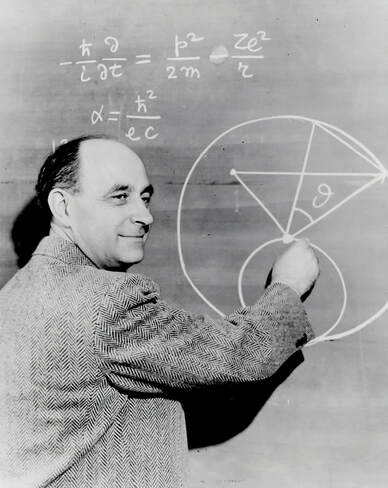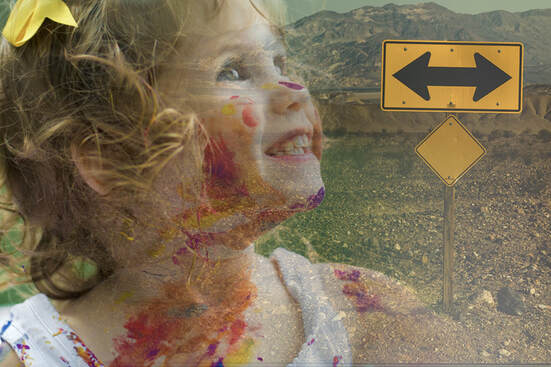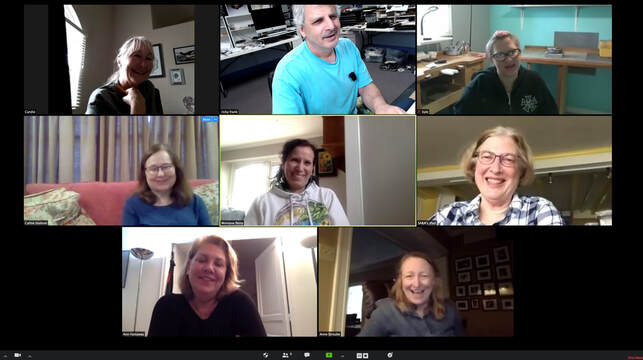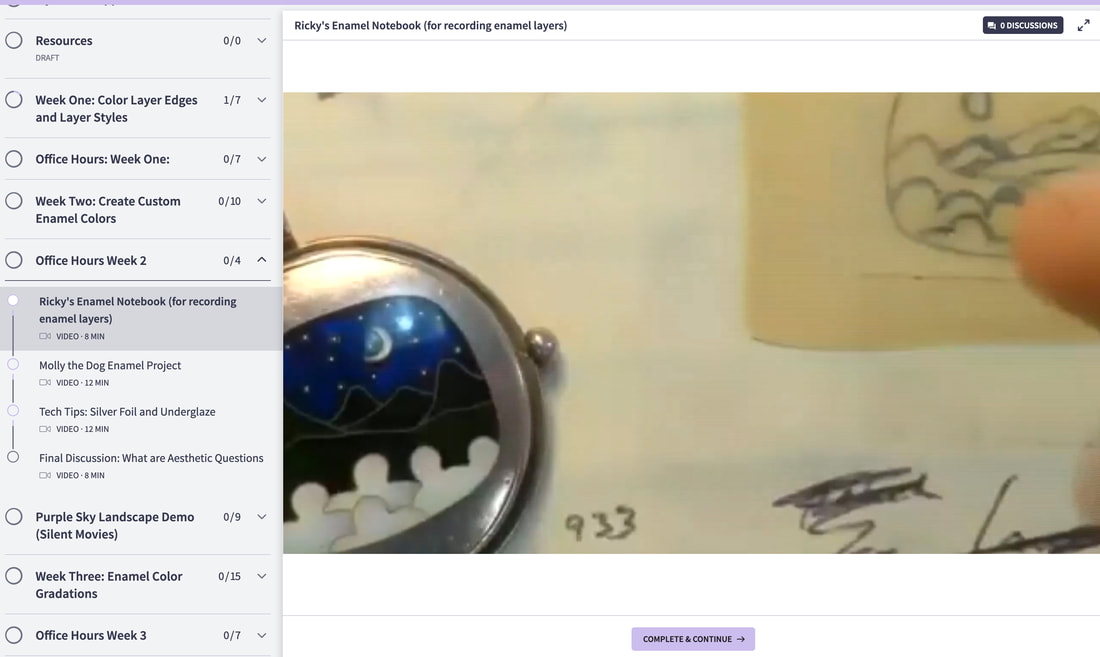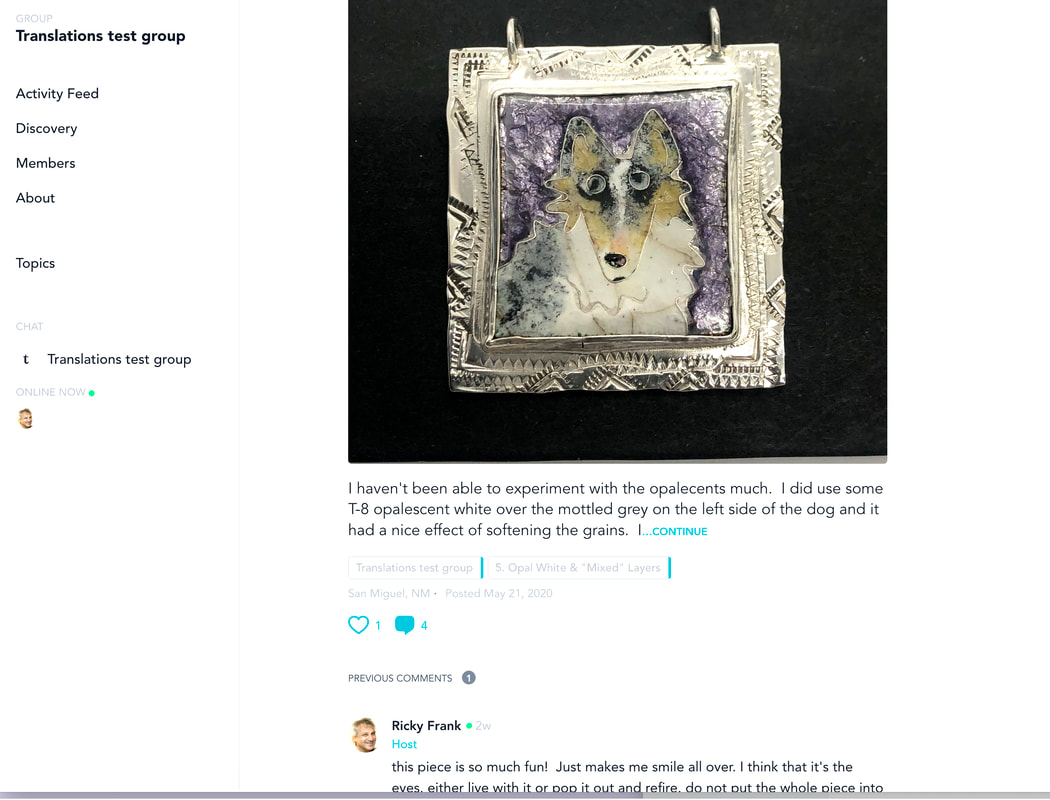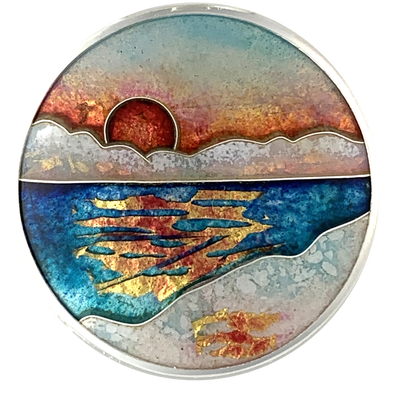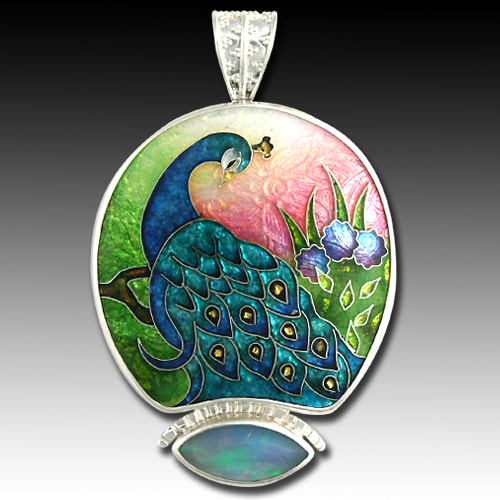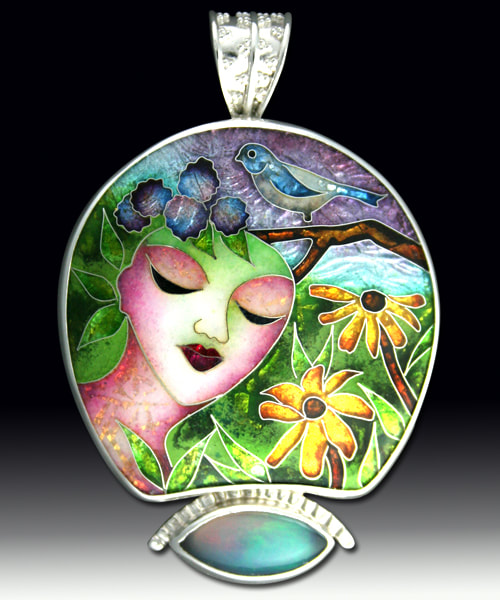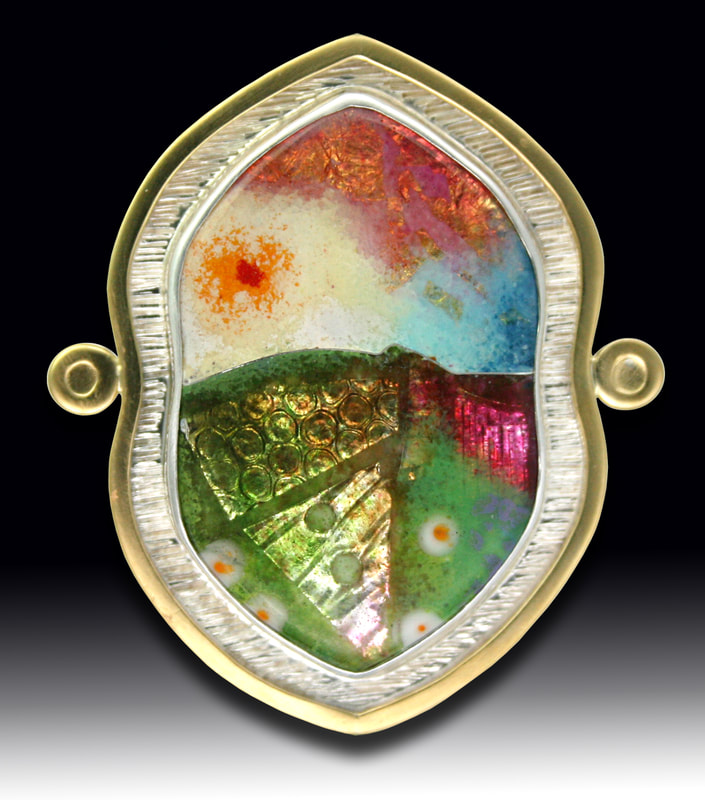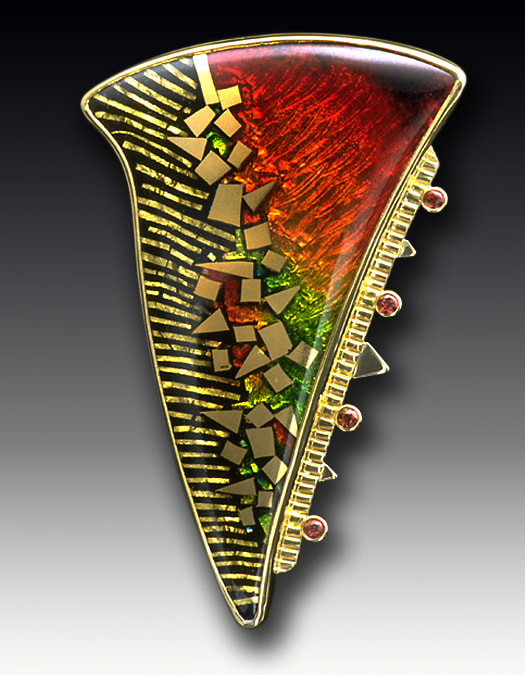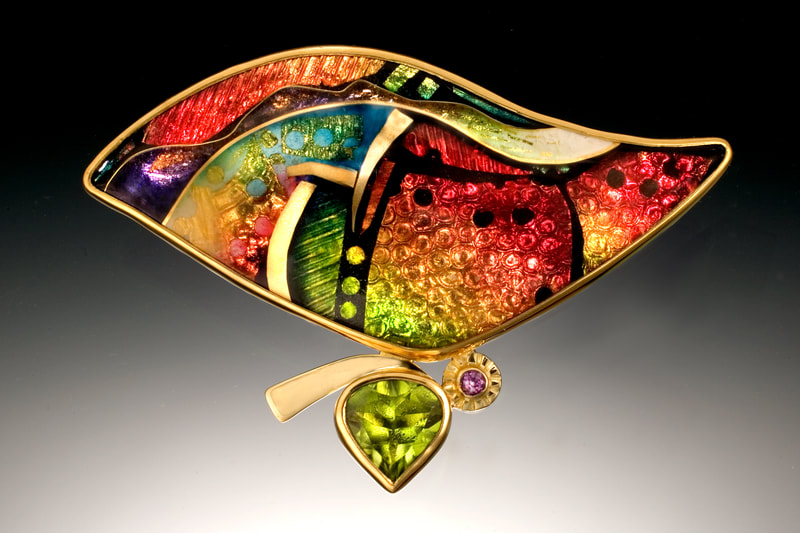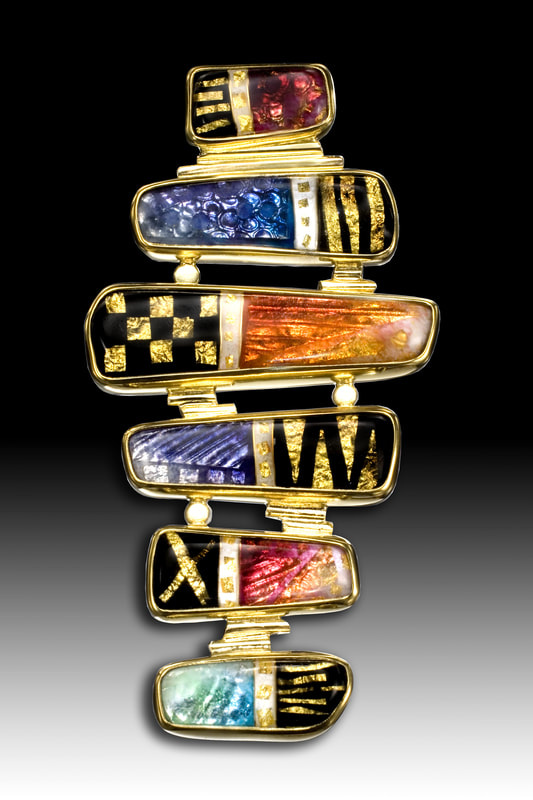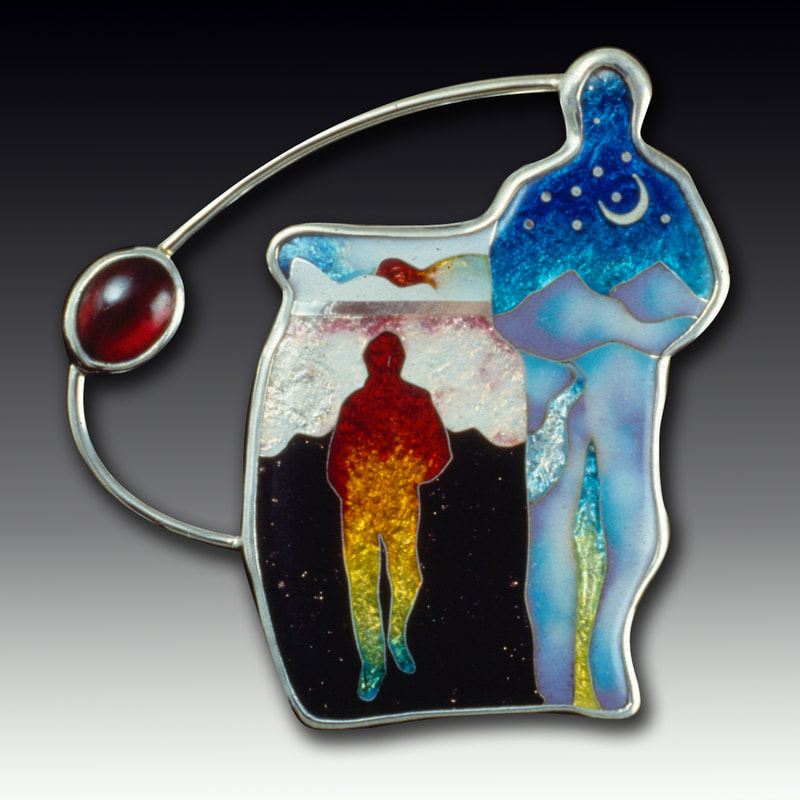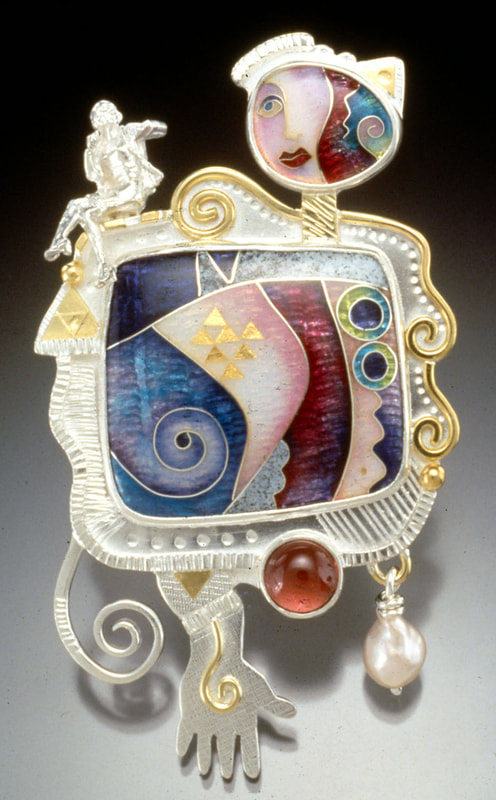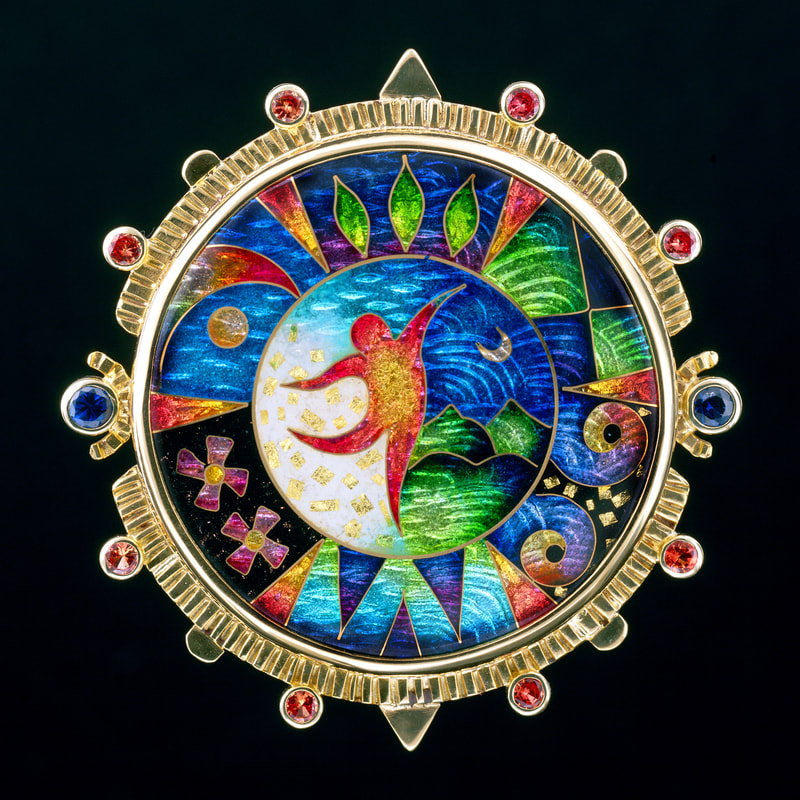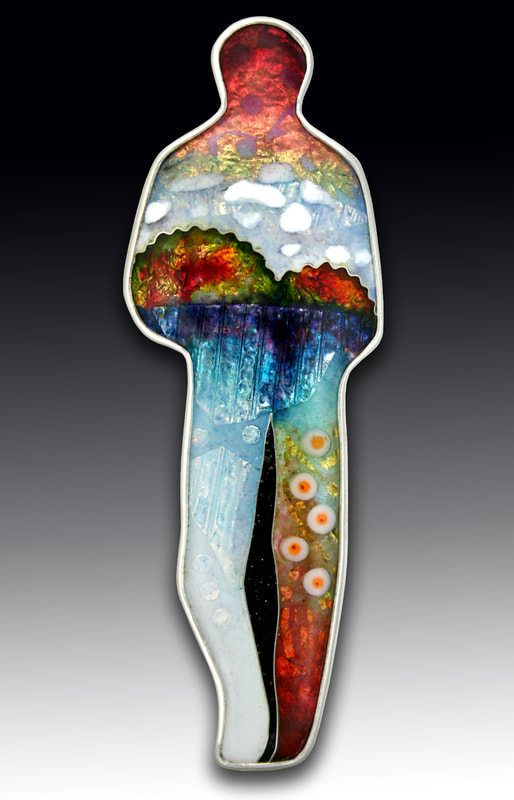Learn to Enamel
Online
in my new virtual studio and classroom
below is a placeholder for Ricky's Welcome video
Join me on an 8-Week
Creative Enamel Adventure!
It's not an online video class.
It's a small group "mentoring" experience.
Here's a video peek into the virtual classroom.
A big question: How do I move "beyond technique"?
|
I share my techniques from the "inside-out"
|
Discover and Explore Your Enamel Vision and Voice.
This has been the most challenging part of my enameling career.
I used to...
- try be "perfect".
- struggle to allow myself time to play.
- think that there was a "right answer".
- want someone to show me the "right way".
- believe that I didn't have a meaningful "story" to tell.
- collect more techniques so that I would "improve".
- feel like I must always be making something that I "liked".
- stay safely in my comfort zone.
- be unaware of WHY I wanted to create.
Your visions will become clear only when you can look into your own heart.
Who looks outside, dreams; who looks inside, awakes.
—CARL JUNG
Here is what I've learned as I've searched for
MY Artistic Enamel Vision and Voice:
- A connection with myself, to others, and to my world empowers me to know what I want to say.
- Creativity is the result of my questions, not someone else's answers.
- Asking technique questions does not often lead me to artistic answers.
- Becoming fluent (my skills and visual imagery) enables me to speak from my heart instead of my head.
- Developing fluency is a process that requires practice, focus, and commitment.
- Knowing WHY I care inspires me to persevere in hard times.
- I must trust myself.
- This is a journey, not a destination. I am in a process of changing myself as I change what I create.
It's difficult to connect
when you are the audience.
|
Which do you think is more helpful?
1. Watch and listen to me tell you how to do it and then you try to follow my directions. or 2. Watch, listen, do it, and then have a "live" conversation about it ? What were your challenges?
What were your questions? What did you discover? How might you do it next time? |
Connecting to others who are facing similar challenges
helps you feel connected to yourself.
|
"I am not here to "teach you MY successes".
I am here to support your journey towards YOUR process of discovery. |
I share what I know and what I have learned.
|
My classes and programs are not for everyone. It depends what you want.
Many craft classes take this approach:
The instructor...
When you return to your studio, you try to remember what you did so that you can make something that you like once again. |
I take a different approach:
I encourage you to...
When you return to your studio, you are not afraid to play and experiment to discover what you like. You don't feel afraid of failing because you understand how to teach yourself to learn, improve, and create. |
Should I study with Ricky Frank?
Yes or No?
There is not a right way.
But different approaches get you different results.
What do YOU want?
Yes,
|
No,
|
Who?
Choose the Program that's right for you.
The "Beginner" Program
|
The "Explorer" Program
|
Here is what some of my students are saying...
/
- 1
- 2
- 3
- 4
- 5
Ricky, although I had been enameling several years my work did not take direction and focus until I came to Atlanta and took a class from you. The things I learned in those three days were profound and was exactly what I needed to take my work to another level.
Gina Eubanks
/
- 1
- 2
- 3
- 4
- 5
/
- 1
- 2
- 3
- 4
- 5
\When I first started watching your videos, I kept thinking why is he asking "why" all the time? Well, you have me hooked. I'm finding myself thinking about "why and why not" all the time now, and all the possibilities that asking that leads to
Margaret Garza
/
- 1
- 2
- 3
- 4
- 5
/
- 1
- 2
- 3
- 4
- 5
As Simon Sinek covers in his book, Start With Why: How Great Leaders Inspire Action, knowing your "why" is critically important in life. It is this focus that Ricky Frank employs to help artists/enamelists understand why they are doing something. He then guides students to build on their "why" as they execute their "what" (jewelry/vessel/wall piece) and "how" (enamel & metal techniques).
Cullen Hackler
Cullen Hackler
/
- 1
- 2
- 3
- 4
- 5
/
- 1
- 2
- 3
- 4
- 5
I like that you have taken time before presenting the technical aspects of enameling, to discuss the mental/emotional landscape of the artistic process. I have taken other art classes, and have never had another teacher walk me through this. That, in itself, is just priceless to me.
Mary Caldwell
Mary Caldwell
/
- 1
- 2
- 3
- 4
- 5
/
- 1
- 2
- 3
- 4
- 5
He talks about the process of learning, the process of mastery, the process of letting the artist inside you "emerge." He's a mentor of the best kind. He teaches, but isn't pedantic about it. His approach is "Here's what I know, what I do and how I do it, but it was a process for me and it'll be a process for you." He teaches you how to answer your own questions. Every lesson isn't just instructional, it's inspiring, liberating and empowering. I'm an engineer, not an artist, and, being me, I started out looking for answers, knowledge, details, details, how-to, how-to. Ricky has given me mountains of that, but probably the most valuable thing I've gained is that now when I sit down at my bench I'm not worried about producing something "good," or the value of my time or the value of my materials or whether I'm meeting some goal.
I'm in the process of becoming an enamelist and Ricky brilliantly enables that process.
Trish Morman
I'm in the process of becoming an enamelist and Ricky brilliantly enables that process.
Trish Morman
/
- 1
- 2
- 3
- 4
- 5
- 0
- 1
- 2
- 3
- 4
My students' enamels are unique, personal, and fun!
Their pieces that come from the heart.
Learn Online
My "Virtual Studio Classroom" takes advantage of modern technology
to help you feel like you are right in the studio with me.
I've combined...
Yes, you can learn, see live demos, and feel engaged, challenged, and connected
from the comfort and safety of your own studio!
to help you feel like you are right in the studio with me.
I've combined...
- Interactive Zoom meetings
- Wireless Camera streams from anywhere in the studio
- A private online community and workbook for sharing and critique
- A weekly "Office Hours" meeting to help answer your questions
Yes, you can learn, see live demos, and feel engaged, challenged, and connected
from the comfort and safety of your own studio!
How?
Zoom Connections:
Engage and Connect with Questions, Demonstrations, and Exercises.
Make new friends and inspire each other.
My WHY
|
"I am fascinated with how light passes through our world; sunlight through the trees in the forest, light behind the clouds in the sky, and light bouncing off the surface of the ocean or lake, or through the various large and small waterfalls of a stream or river. I feel a sense of awe when I experience these phenomena. I spent 8 weeks each summer from the age of 10-15 at a YMCA camp in the Adirondack Mountains of upstate New York. The natural beauty that surrounded me each day left an impression that still resonates within.
Now my family prefers the beach to the mountains. I love both! Enamel seems like a perfect media for me: I can capture the light through the layers, and the combination of art and science plays perfectly into the different parts of my experience. It's not just problem-solving; it's creativity and expression. It's my story, expressed in enamel, that I choose to share. I work to develop my skills, both technical and aesthetic, so that I can share my sense of "awe" with others as I use my enamel vocabulary to sing my enamel song to share my enamel vision. |
